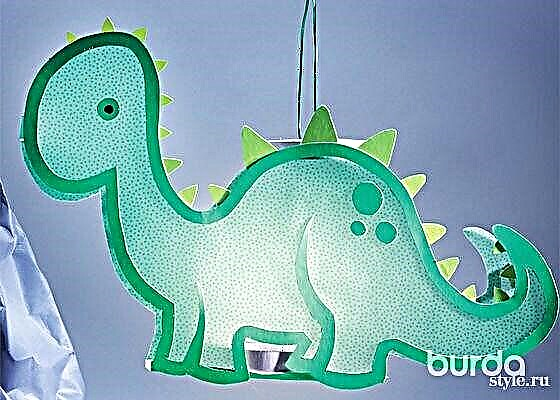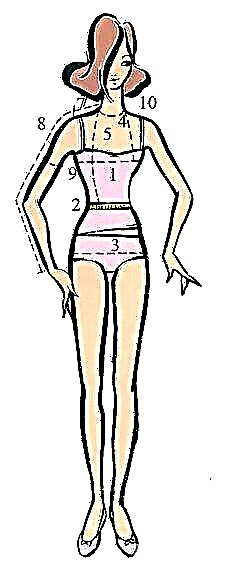A few tricks and life hacks that will help prevent the appearance of traces of the iron and unnecessary problems when ironing.

Lasas are noticeable areas on the material that appear when worn in places of friction or during ironing from exposure to a hot iron.
In areas with las, the tissue changes appearance. If we are talking about las, which arise during the process of wearing clothes, the fabric usually begins to shine, to shine. The appearance of such a gloss, perhaps, cannot be prevented: Lases arise due to the peculiarities of the fabric and the operation of the thing.
Lasses from the iron can remain as obviously brilliant, and not. The fabric may obviously not become tarnished, but simply become smoother, slightly change the texture, color (lighten or darken) - depends on the composition and properties of the material.

A mark may appear if you hold the hot iron in one place or heat the iron too much.

Or when ironing on the front side without an iron and gasket templates, for example.
We already wrote about how to remove the las, if they did appear. A selection of tips for working with different fabrics:
How to remove traces of the iron?
And below - about why there are lasses and marks and how to prevent the appearance of traces of the iron.
1. Choose the right temperature

The first and most obvious tip: do not iron with a hotter iron than necessary. Even one movement of a too hot sole - and the mark may remain. Test the degree of heating on a patch of fabric from which you sew, or on an inconspicuous area of the finished thing. If in doubt, start with a lower degree of heating.
2. Iron on a soft surface

Traces of the iron are more likely to appear if the surface on which we are ironing is hard. In such cases, the heating and pressure of the iron is combined with a hard surface: the material is compressed, squeezed on both sides, and is still fixed by high temperature. You can pick up a soft cover for the board or put a cloth rolled up in several layers on the board, straighten it, cover it with an iron and iron it.
3. Use an iron

Speaking of the iron. This is a flap of fabric (usually coarse calico or other thin plain cotton material), which is placed between the iron and the fabric and / or between the board and the fabric when ironing. The task of the iron is to protect the material. If you are not a newbie to sewing, you probably have several actively used ironers. But just in case: especially if you are ironing the front side, especially if it is a material prone to the appearance of las, use an iron.
More information about ironers and other basic rules for ironing:
How to iron
Ironing correctly means good sewing!
4. If possible, iron from the inside out.

Lasses on the wrong side are, of course, unpleasant, but not as much as they are on the front. If material is prone to Las, where possible, iron from the inside out. When working on the front side - see the previous paragraph about iron.
5. To prevent allowances from printing on the front, use paper templates.

Ironing with patterns from the inside
Allowances, tucks and similar items having a certain thickness when ironed can be printed on the front side. Moreover, this can happen when ironing from the face, and from the inside. If we iron from the face, the area under which the allowance lies turns out to be slightly more elevated than the main fabric, and the iron acts on it more strongly. There remains a trace. When ironing from the inside, sections with a greater thickness act on the main fabric and it changes shape. On the front side, too, a trace may remain.

Ironing with patterns on the front through the iron
Ironing patterns help prevent this.They can be made of thick paper, for example, landscape paper. But not too thick, otherwise the patterns themselves will be printed on the fabric. If the seam and allowances are straight, a pattern in the form of a simple rectangular strip about 3 cm wide is suitable. If the seam or tuck is curly, cut out a pattern of the corresponding shape. When ironing, lay the template between the stock and the part - this will prevent the appearance of prints and las. When ironing from the front, use an iron.
6. Use steam and minimize iron sole pressure on fabric

If the material is prone to prints and las, try a minimum of iron pressure + steam exposure. Do not press on the iron. Just slide them or lightly touch the surface of the fabric and add steam. You can start with exposure to one steam: an iron - a few millimeters above the surface. If there is a steam boost function, you can use it.
7. Use tailor's ham and other ironing accessories

The throat, armholes and similar areas of indirect shape are well ironed on a tailor's ham. Hard-to-reach spots help to iron a hand pad, sleeves - a special platform or board, and so on. These devices not only facilitate ironing, but also help to avoid the appearance of Las. More about the mentioned and other useful devices for ironing - in this review:
11 accessories for perfect ironing
How to make your own tailor's ham and suture roll:
How to make tailor's ham and suture roller
8. Use the nozzle or shroud on the sole of the iron

These devices are put on the sole of the iron and protect the fabric from excessive temperature effects, the appearance of tan and las. The nozzle can be, for example, made of silicone - it is stretched over the sole. Rigid protective covers - in fact, extra soles for more delicate ironing. Both those and other devices should be used when working with thin capricious fabrics, wool, synthetics and other materials that are prone to the appearance of traces from the iron.
Wet Thermal Terminology
Life hack: ironing mat with magnets
What water can I put in an iron?
How to clean the iron at home: 6 ways
How to sew a do-it-yourself case for an ironing board: 2 workshops
Photo: Natalya Pykhova, Pixabay, closetcasepatterns.com, Zoe Home Appliance Store



